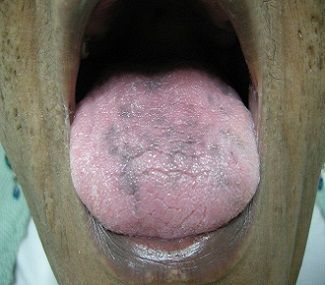68-Year-Old Woman With a History of Aggressive NHL Presents With Tongue Hyperpigmentation
A 68-year-old woman with a history of aggressive NHL developed hyperpigmented patches on her tongue two months after starting her R-CHOP chemotherapy regimen. Which medication was likely the cause, and which other location would you expect hyperpigmentation on this patient?
A 68-year-old woman with a history of aggressive stage III non-Hodgkin lymphoma (NHL) developed hyperpigmented patches on her tongue two months after starting her R-CHOP chemotherapy regimen. Which medication was likely the cause, and which other location would you expect hyperpigmentation on this patient?

What is your diagnosis?
Related Content